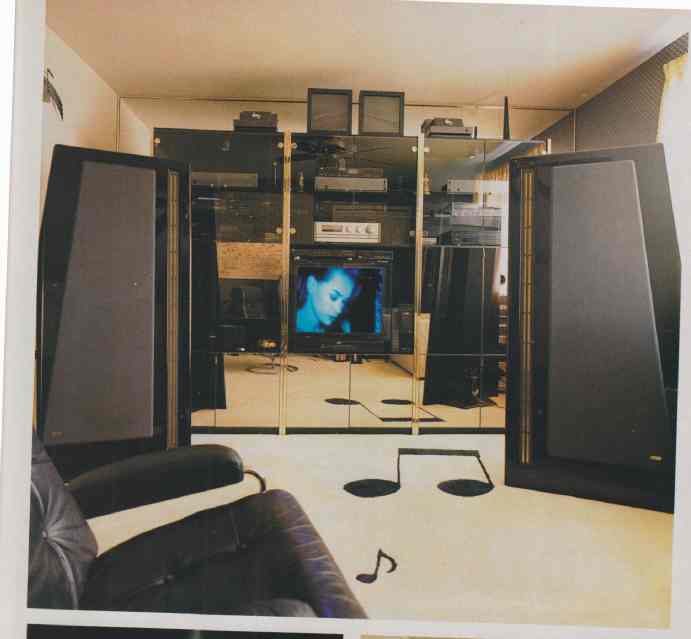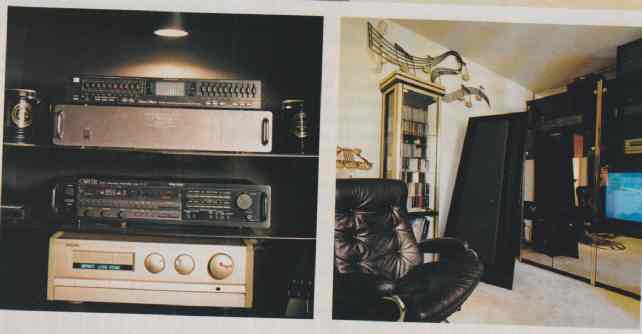There’s nothing subtle about the music room in Diane Henry’s suburban-Cleveland townhouse. Four towering Carver speakers, nineteen meticulously organized components—including six that play CD’s—a computerized control system that talks and listens, and a very chic decor. “It’s not a home theater system,” the forty-eight-year-old attorney says emphatically. “It’s an audio system with a television. As a music lover and season subscriber to the Cleveland Orchestra concerts, I want musical purity.” And that she has—but things didn’t come together overnight.

“I’ve always had some kind of stereo system, but nothing like this,” Henry admits. Her pursuit of sonic excellence started as a hobby several years ago, not long after her husband died. “I was listening to the radio one day, and they played One of Those Songs by Jimmy Durante—my favorite song. I persuaded the radio station to send me a tape of the recording, but I didn’t have a cassette deck. So I went out to buy one and [ the way] became really astonished by all the advances I wasn’t aware of. Three and a half years and many visits to Severance Hall later, the sound is like being there.”

Henry—who designed and set up the system on her own—started out with a pair of Carver hybrid-ribbon Amazing Loudspeakers in a bare room, eventually acquiring the newer Amazing Platinum Edition speakers and moving the original pair to the back of the room. “The Amazings have a particular dispersion pattern that is more lifelike than anything else I’ve heard,” Henry says.
Carver amplifiers supply the power. A pair of Silver Seven-t 375-watt monoblocks drive the front speakers, while each rear speaker is powered by one channel of an M1.0t amplifier, rated to deliver 400 watts per channel. A third M1.0t powers a pair of Carver Silver Edition speakers in the bedroom.
The heart of the system is a Philips AV 1001 digital processor, featuring a Dolby Pro Logic decoder and numerous ambience modes for music and movies, including five that are adjustable. Three source components feed digital signals directly to the AV 1001: a Philips CDC-875 six-disc changer, a Yamaha CDX-805 five-disc carousel changer, and a Pioneer CLD-3080 laserdisc/CD combi-player.
Five additional source components run directly to a Carver CT-17 tuner/preamp: a Technics RS-B1 1W dubbing cassette deck and SL-J2 turntable, a Philips CDI-910 CD Interactive (CD-I) player, and two novel CD components—Sony’s CDP-K1 karaoke player, which can perform vocal masking with almost any CD, and a Midtown Electronics GMR-1990, which is a Magnavox CD player disguised as a 1915 Gramophone record player. An ADC SS-300SL ten-band stereo equalizer, used mainly for recording analog cassettes, completes the audio lineup.
As for digital recording, Henry has adopted a wait-and-see attitude regarding MD and DCC but is seriously considering a CD recorder—especially now that she can get a Philips model by mail-order for $3,000. “If they can bring the price of recordable CD down to a reasonable level, it’ll really go. I have LP’s that I want to put on CD.”
Henry’s video arsenal comprises a modest 27-inch Zenith TV and two VHS Hi-Fi VCR’s: a Zenith VRD 530 HF and a Panasonic PV 4160. Video soundtracks go through the audio system, while the video signals—including those from the laserdisc and CD-I players— are switched by a JVC JX-S 300 switcher. All of the equipment is housed in a stunning brass- and-glass cabinet made by Sharut of Canada. The automation side of the system—inspired by Henry’s early fascination with the science fiction of Ray Bradbury and Isaac Asimov—is the handiwork of computer whiz Ron Groening. He assembled a control inter face (not shown) using an SIIG MiniSys 386SX computer, a program from Home Automation Laboratories called Dynasty, and a variety of peripherals, including a voice- recognition card and a speech synthesizer.
“The computer understands my voice commands and can turn any of the components on or off and control their operations,” Henry explains. And to the amusement of house guests, the system also speaks when spoken to: If Henry says, “Good morning,” it responds, rather wryly, “Well, what do you expect, a fanfare?” Of course, it does a few more practical things, too, such as prompting her during a programmed routine to perform tasks that it can’t.
All told, Henry’s foray into audio’s upper echelons cost upwards of $40,000—including $16,000 just for the room. “If you were able to rent the Cleveland Orchestra for about two hours—that’s about what it would cost,” she says with a chuckle.
Source: Stereo Review (Jan. 1994)